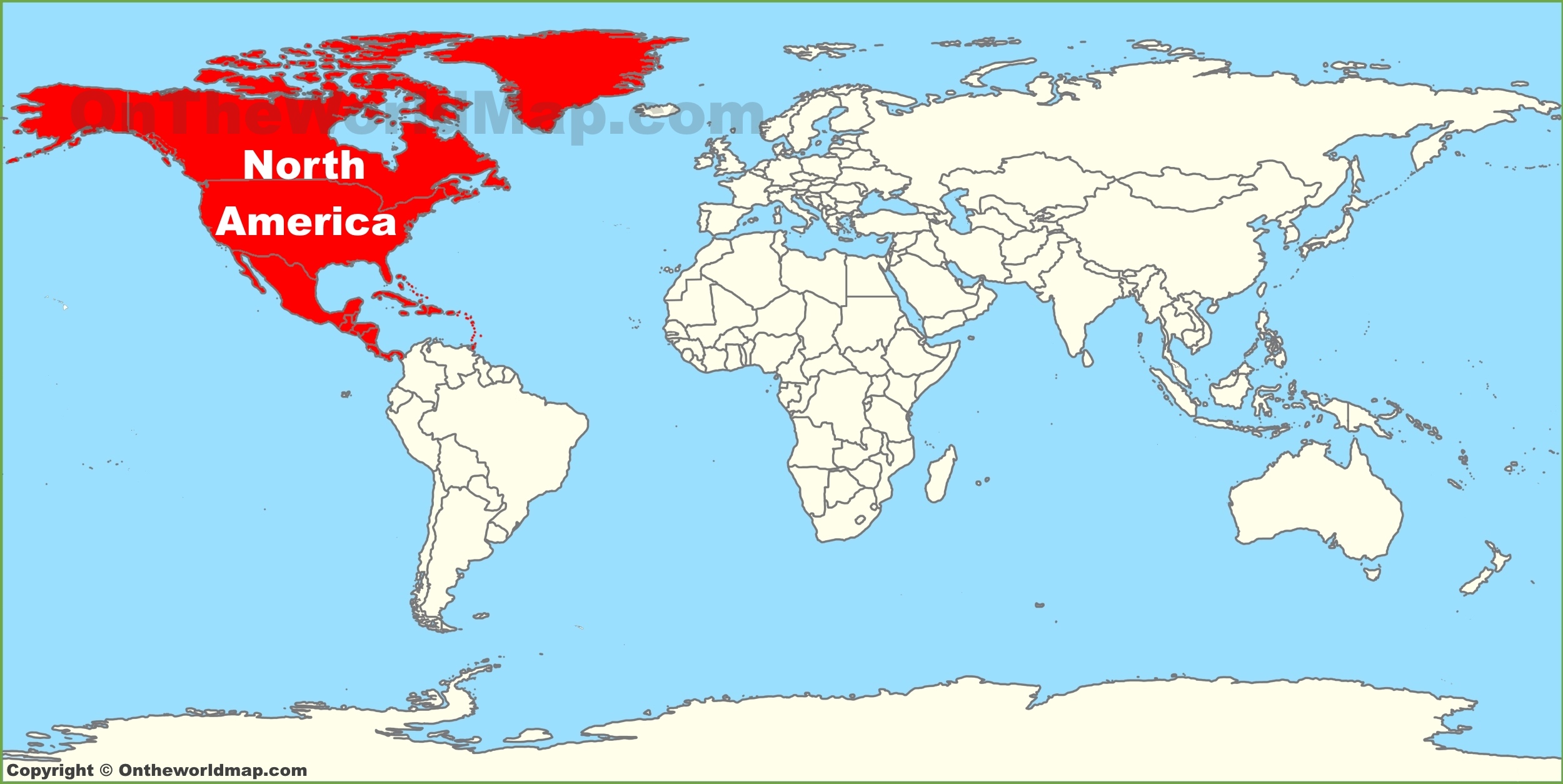North America, a vast and stunning continent, sits prominently on world maps, capturing both the imagination and curiosity of countless individuals. Nestled between the Arctic and the Caribbean, its geographical coordinates mark it as a vital component of the Earth’s environmental and cultural tapestry. The fascination with North America extends beyond its borders, as it encompasses diverse ecosystems, rich cultural histories, and profound implications for global climate dynamics. This multifaceted interest in North America warrants further exploration.
From a geographical perspective, North America occupies a substantial area, stretching approximately 24,709,000 square kilometers. This accounts for about 16.5% of the world’s land surface. The continent is bordered to the north by the Arctic Ocean, to the east by the Atlantic Ocean, to the west by the Pacific Ocean, and to the south by the Caribbean Sea and Central America. This strategic positioning contributes significantly to its climate variations and ecological diversity, presenting an array of habitats ranging from tropical rainforests to arid deserts and tundra regions.
One striking feature of North America is its geographical diversity, which includes majestic mountain ranges, expansive plains, and vibrant coastlines. The Rocky Mountains dominate the western landscape, their height and rugged beauty symbolizing nature’s grandeur. In contrast, the Appalachian Mountains, older and more eroded, offer a different charm, comprised of lush forests and winding valleys. The Great Plains serve as a remarkable expanse of grassland that provides crucial agricultural resources, underscoring the continent’s role in global food production.
In addition to these natural features, North America is home to an impressive array of biodiversity. The continent encompasses a myriad of ecosystems, harboring thousands of plant and animal species. These ecosystems, however, are not impervious to the impacts of climate change, which threatens both the flora and fauna that inhabit them. Ecological shifts driven by shifting climates could provoke changes in migration patterns, species extinction, and habitat loss, posing significant threats to the continent’s biological integrity.
North America also boasts cultural diversity, which is integral to understanding its global significance. The continent is a mosaic of cultures, languages, and traditions, largely shaped by historical migrations and encounters among Indigenous peoples, European settlers, and a multitude of immigrant communities. Each group has contributed unique elements that enrich North American identity, fostering a cultural environment that reflects the resilience and adaptability of its inhabitants. This dynamic cultural exchange is not only fascinating but profoundly influential, shaping social norms, governance structures, and economic practices across the continent and beyond.
Moreover, the economic landscape of North America is a critical aspect that captures global attention. The continent houses some of the world’s most powerful economies, including the United States and Canada. These nations are pivotal players in international trade, finance, and technology, often setting trends that resonate worldwide. The economic clout of North America underscores its relevance on the global stage, where its policies and decisions can have cascading effects across various sectors.
Nonetheless, with great power comes substantial responsibility. The continent has historically been a significant contributor to global greenhouse gas emissions, raising pressing concerns about environmental stewardship. Industrial activities, urbanization, and reliance on fossil fuels have all played roles in exacerbating climate change. As a region rich in natural resources, North America holds the potential to lead in the transition toward sustainable practices that could not only mitigate ecological damage but also serve as a model for the rest of the world.
In recent years, there has been a marked increase in awareness regarding climate issues across North America. Grassroots movements and advocacy groups have risen to challenge conventional practices, demanding comprehensive policies that address climate change with urgency. The conversations surrounding climate justice emphasize the disproportionate effects of environmental degradation on marginalized communities, highlighting the need for equitable solutions. This burgeoning movement reflects a deeper understanding of the interconnectedness of ecological health and social equity.
Furthermore, North America’s geographical positioning makes it particularly vulnerable to the impacts of climate change, including rising sea levels, increased frequency of extreme weather events, and shifting agricultural zones. Coastal cities like New Orleans and Miami face threats from rising waters, while residents in regions prone to drought must adapt to changing water availability. These realities compel a collective response from the continent’s population, emphasizing the necessity of collaboration and innovation in addressing the climate crisis.
Ultimately, North America serves as a pivotal element of the world map—not solely in a geographical sense but as a symbol of the complexities of human environmental interaction. Its landscapes reflect a narrative of natural beauty and ecological fragility, while its diverse societies embody resilience and adaptability. As discussions surrounding climate change grow increasingly urgent, the role of North America as both a contributor and potential leader in the sustainability movement cannot be overlooked. The continent’s future hinges on a collective commitment to prioritizing environmental health, allowing its landscapes and cultures to thrive. In doing so, North America will not only secure its legacy but also contribute to a more sustainable world for future generations.
